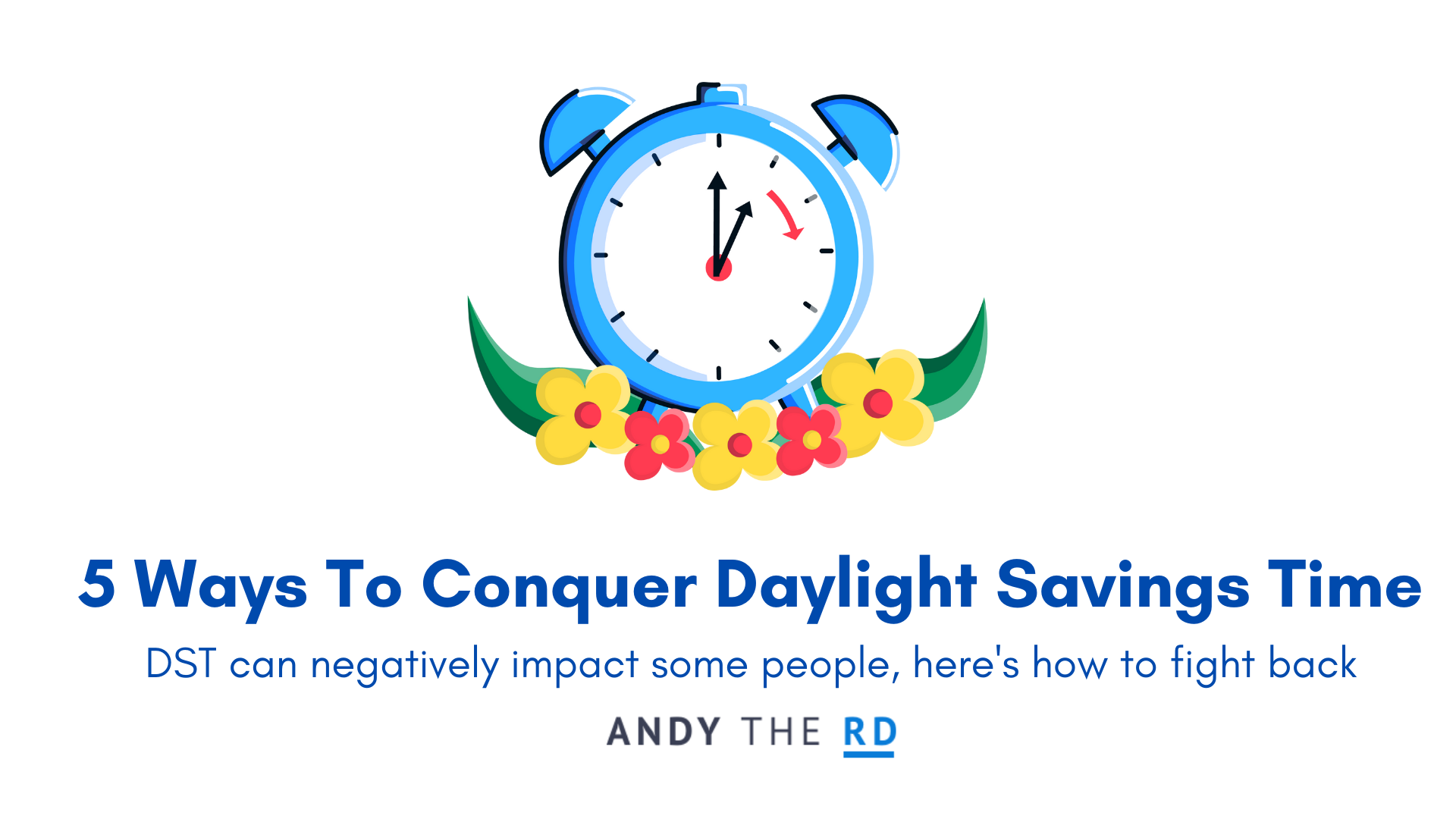On Sunday March 13th our society will once again collectively spring forward and welcome the warmer, sunnier and longer days ahead.
But we will also lose an hour of sleep, and there is both an adaptive period and cost associated with this – especially considering that about 1/3 of Canadians sleep fewer hours than recommended to achieve the optimal state of physical and mental health.
Some people, especially those who don’t sleep well to begin with, may be adversely affected by daylight savings time (DST) which in turn has consequences for their ability to focus at work, their appetite and their overall mental & heart health.
In fact, The American Academy Of Sleep Medicine is in favour of abolishing DST for this very reason.
But until such as a time as that happens, what can we do to fight back against these potentially problematic effects of DST?
I’m here today in collaboration with the Canadian Beverage Association to help teach you just that.
Let’s explore five options:
Create Habits Around Daily Movement: Individuals who are less active may be more likely to deal with sleep issues, and while you don’t need to go join Cross fit to resolve this concern starting with a daily step target could help. Habits like these may be best formed if you pick a specific time of day to accomplish them – ie; I will take a 30 minute walk every afternoon at 2pm , which in turn will also help ensure you get daily sun exposure (that can’t be taken for granted during the WFH era!). One of the major positives of DST is the increased window with which we can get that valuable sun in.
Employ Stress Management Techniques: A lack of sleep is stressful to deal with and an increase in stress can also affect sleep, so there is a potentially unwanted negative feedback loop at play here. Meditation is an accessible and effective stress management tool, with studies suggesting it has the potential to improve sleep quality. There are a plethora of apps available, including Calm and Headspace, and if meditation isn’t your thing you can always hop on YouTube and try a guided yoga session!
Studies in older adults have suggested two hours of weekly meditation over a 6 week period can significantly reduce sleep disturbances.
Create Better Sleep Hygiene Habits: There are basic principles that many of us know we should employ around bed time but perhaps don’t because we can’t be bothered. It may make sense, especially leading up to DST, to consider:
- Meditation before bed
- Avoiding alcohol, caffeine and nicotine in the 4-6 hours before bed time
- Keeping your bed environment cool, quiet and leaving electronics outside of the room
- Build in regularity to your sleep routine, this may mean sleeping a bit earlier to adjust for change.
Optimize Your Food Environment: Poor or modified sleeping patterns may affect your overall hunger levels and propensity towards certain food cravings. This means that your food environment at home, which is a fancy way to say what is stocking your pantry and fridge, becomes increasingly important. Studies have demonstrated that foods that are most visible and accessible to us are the ones we are more likely to consume, so keep that fruit and nuts bowl in plain sight and consider assessing the state of your kitchen to make your life easier. Frozen fruit is a great option for those with a sweet tooth whereas roasted seaweed snacks or roasted chickpeas, for example, can both hit that savoury/oily/crunchy feeling.
Use Caffeine Strategically: When used strategically caffeine offers us a defense against some of the negative effects of DST. Caffeine is known to improve our capacity to perform both physical and cognitive tasks by reducing our perceptions of fatigue (ie; making us feel less tired than we are). So when I say “strategic” caffeine use, that really boils down to understanding two things:
- Amounts: 400mg of caffeine daily is considered the level at which most people are unlikely to have any negative consequences from their caffeine consumption, although this number varies from person to person it’s a reasonable guideline. For reference, 250 ml of homebrewed coffee has around 80mg of caffeine, which is the same amount in a 250 ml energy drink, whereas 250ml of green tea has 40 – this gives you plenty of wiggle room.
- Timing: The most relevant consideration around timing of caffeine intake has to do with how quickly it can take effect (as quick as 15 minutes after consumption) and the time at which you should cut off your intake before bed to minimize risk of sleep disruption (around ~ 6 hours).
- The Source: It’s also important to acknowledge that caffeine is caffeine and as such equivalent amounts do not affect the body differently whether they come from natural or synthetic sources. The 80 mg of caffeine that occurs naturally in coffee will not cause more or less of an affect on the human body than the 80 mg of caffeine that has been added to products like energy drinks or other beverages.



